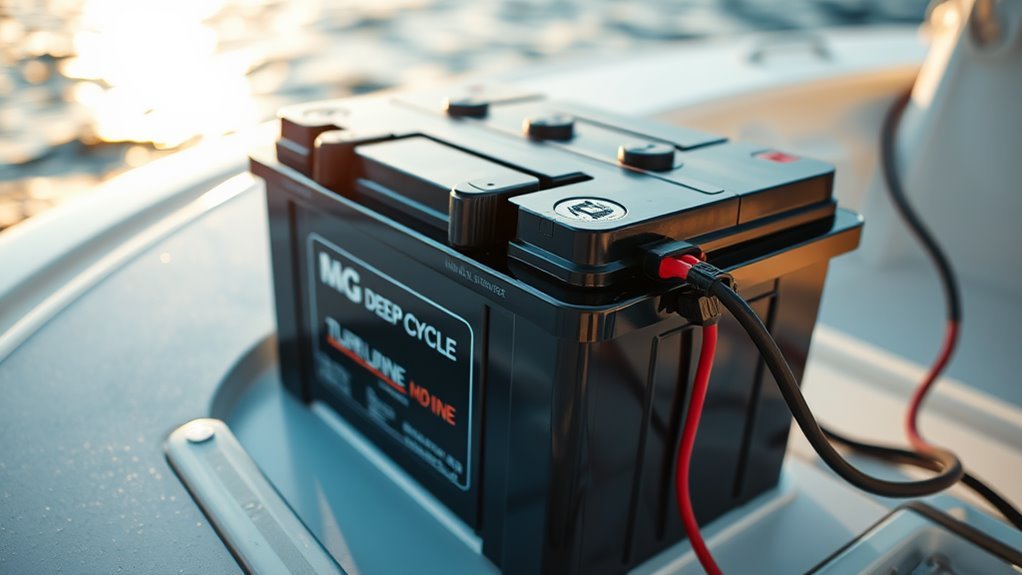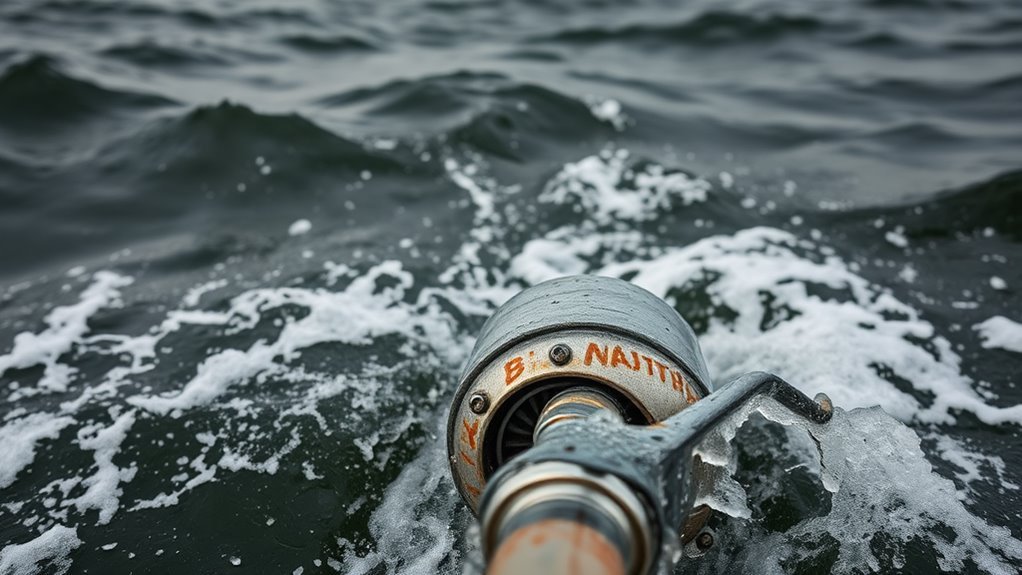A trolling motor battery’s run time depends on several real-world factors I’ve seen firsthand during my years on the water. As a boat mechanic, I can tell you that a standard 100Ah battery rated for 5 hours at 20 amps rarely delivers those exact numbers in practice.
The actual performance of your battery depends on:
- Speed settings you’re using
- Water conditions and current
- Battery age and maintenance history
- Temperature on the water
- Your motor’s power draw
I’ve tested hundreds of setups, and here’s what I typically see: A well-maintained 100Ah deep cycle battery running a 12V trolling motor at medium speed (drawing about 20 amps) lasts 3-4 hours. At low speed, you might stretch that to 6 hours. Push it to full throttle, and you’re looking at 1-2 hours tops.
Pro tip from my repair shop: Deep cycle batteries last longer when you don’t drain them below 50% capacity. I recommend carrying a spare battery if you’re planning extended trips. From my experience fixing burned-out motors, it’s better to swap batteries than risk running one completely dry.
“The secret to long battery life isn’t in the specs sheet – it’s in how you use and maintain it.” – Brett Karpowski, Trolling Motor King
Understanding Battery Capacity and Amp Hours

Battery capacity is your trolling motor’s lifeblood, and it’s measured in amp hours (Ah).
We’re talking about your battery’s total energy storage – the higher the amp hour rating, the longer your run times on the water.
Let’s break it down: A 100Ah battery running a motor that draws 20 amps will last about 5 hours theoretically.
But here’s the catch – you’ll need to factor in your other electronics. Every fish finder and LED light adds to your total power draw.
Don’t forget the real-world variables that’ll eat into your battery life. Rough waters mean your trolling motor works harder, and weather conditions can impact performance.
That’s why we always recommend calculating your power needs with some wiggle room for these energy-hungry scenarios. Additionally, understanding battery health and age is crucial for maintaining optimal performance and runtime.
Power Requirements of Different Trolling Motors
When selecting a trolling motor, you’ll need to match your power requirements to the right battery setup.
Let’s break down what you’ll need: smaller motors up to 55 lbs. of thrust work with one 12V Marine battery, while 55-80 lb. thrust motors demand two batteries in a 24V configuration.
For serious power users, motors exceeding 80 lbs. of thrust require three 12V batteries for 36V systems, and E-Drive setups need four batteries for 48V operation.
We’ve found that most pros run their trolling motors at about 30% capacity, which helps manage amp draw and extends runtime. Additionally, utilizing higher voltage systems can enhance battery efficiency, allowing for longer outings on the water.
Impact of Weather and Water Conditions

Environmental conditions can dramatically impact your trolling motor’s battery life and performance.
We’ve found that rough waters force your thrust motor to work harder, drawing more amperage and draining your Marine Battery faster than in calm conditions.
- Strong winds can increase your motor’s power draw by up to 50%
- Rough waves force your Battery to work overtime, cutting runtime by one-third
- Fast currents require more Motor power to maintain speed
- Boat weight and size affect power consumption noticeably
- Weather changes can throw off runtime estimates dramatically
Don’t assume calm-water performance metrics will hold up in challenging conditions.
When planning your trip, factor in weather forecasts and water conditions. A Battery that runs for 8 hours in ideal conditions might only last 5-6 hours when fighting wind and waves. Additionally, higher thrust requirements in adverse conditions can lead to increased battery drain, so be prepared to adjust your expectations.
Maximizing Your Battery’s Runtime
Proper management of your trolling motor’s power consumption can dramatically extend your time on the water.
We’ve found that using variable speed settings on deep cycle marine batteries is a game-changer for battery performance. Don’t max out your power when you don’t need to.
Here’s the real deal: monitor your total electrical load. Those fish finders and lights you’ve got running? They’re eating into your battery life.
For higher power demands, consider upgrading to a 100Ah LiFePO4 battery – you’ll get about 5 hours at 20A draw. But watch those weather conditions; fighting wind and current burns through power fast.
Never run your batteries completely dry. It’s a rookie mistake that’ll trash their lifespan.
Keep them charged above 20% for peak longevity. Additionally, consider utilizing smart charging practices to optimize your battery’s performance and lifespan.
Battery Types and Their Performance

Selecting the right battery type for your trolling motor can make or break your fishing experience.
Let’s explore the key differences between battery types and their real-world performance.
- LiFePO4 batteries dominate with 100% depth of discharge capability, maximizing Motor Run time.
- Traditional lead acid batteries limit you to 50% discharge, cutting usable capacity in half.
- AGM batteries offer maintenance-free operation with better performance than flooded cells.
- High-thrust motors (80+ lbs) need three 12V batteries for peak performance.
- Environmental factors slash runtime – strong currents and wind are battery killers.
We’ve seen countless anglers struggle with battery choice.
The math is simple: a 100Ah battery delivers 20 amps for 5 hours in perfect conditions.
But real-world performance varies dramatically based on your specific setup and conditions. Regular maintenance procedures ensure optimal battery life and performance throughout your fishing trips.
Essential Maintenance Tips for Longer Life
When it comes to maximizing your trolling motor battery’s lifespan, smart maintenance isn’t optional – it’s mission-critical.
For best performance, regardless of your battery’s size or power rating, we’ve got to be proactive.
Here’s what matters: Charge that battery after every single use. It’s essential to recognize that sulfation kills batteries faster than anything else.
We’re talking regular voltage checks (12.6-12.8V is your sweet spot), religious terminal cleaning, and always disconnecting the motor during storage.
Don’t skip the battery tender during off-season – it’s your insurance policy against capacity loss. Regularly cleaning connections helps prevent corrosion and oxidation that can hinder battery performance.
Trust us, these aren’t just suggestions. They’re your blueprint for extending battery life and maintaining peak performance.
Your trolling motor’s reliability depends on it.
Frequently Asked Questions
How Long Does a Trolling Motor Last on a Full Battery?
With proper trolling motor efficiency, we’ll typically get 2-3 hours at full power or 5-6 hours at half speed, depending on power consumption factors like wind, current, and onboard electronics.
How Long Will a 100AH Battery Last With a 55 Lb Thrust Trolling Motor?
We’d expect 5 hours with ideal battery capacity and trolling motor efficiency, but real runtime calculations suggest 3.7 hours when considering fishing conditions. Proper battery maintenance helps maximize your actual time on water.
How Often Should You Replace Trolling Motor Batteries?
We’ll typically need to replace trolling motor batteries every 3-4 years, but with proper maintenance tips and ideal charging practices, they can last longer. Watch for signs of deterioration like reduced runtime.
How Long Does a 12 Volt Deep Cycle Battery Last?
A 100Ah battery can power our boat for 5 hours at 20 amps. We’ll get 3-5 years from a well-maintained 12V deep cycle battery with proper charging and minimal deep discharges.